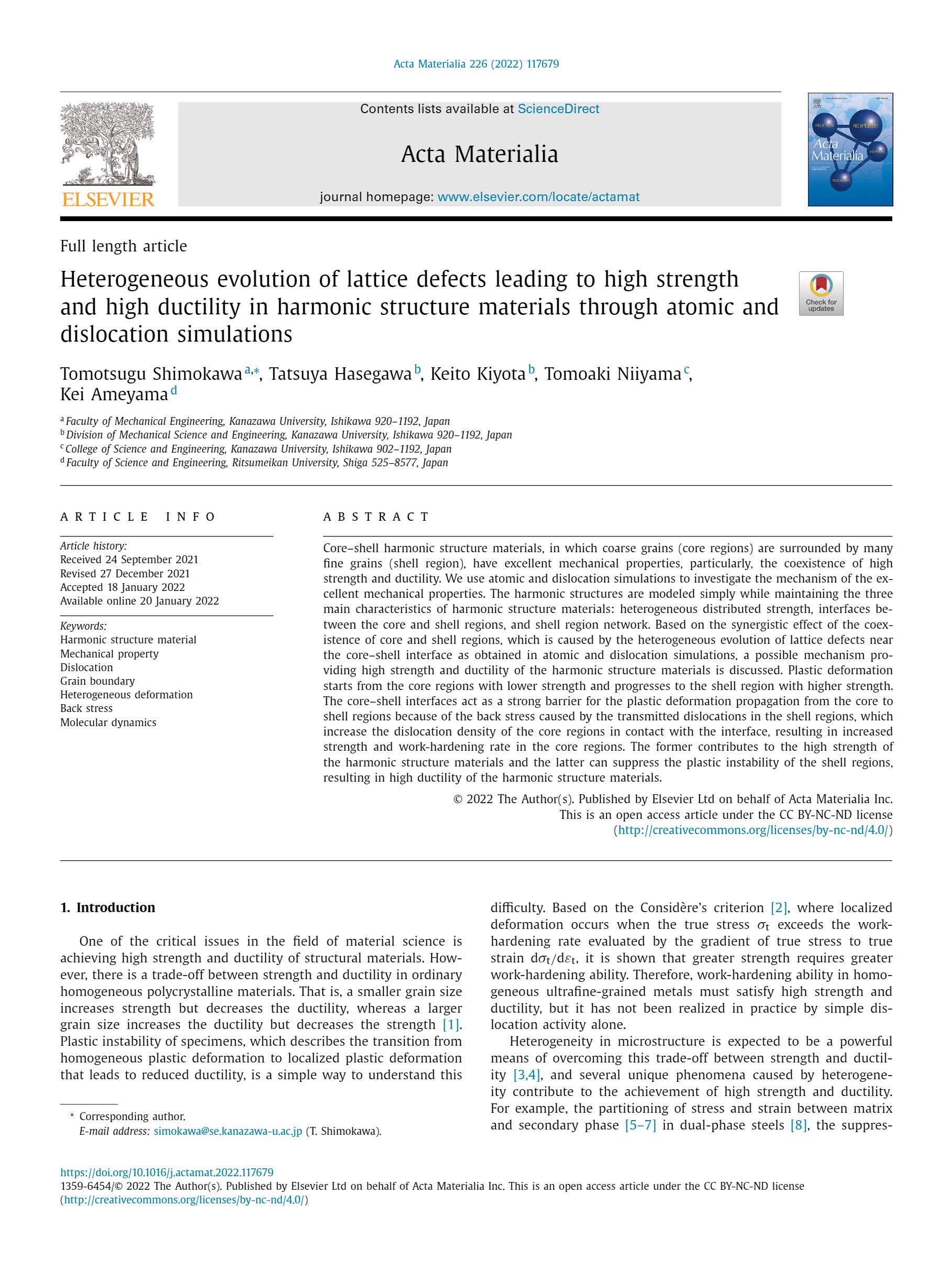Heterogeneous evolution of lattice defects leading to high strength and high ductility in harmonic structure materials through atomic and dislocation simulations
Acta Materialia, 226(2022), 117679(1-15). DOI: https://doi.org/10.1016/j.actamat.2022.117679研究論文概要
Core–shell harmonic structure materials, in which coarse grains (core regions) are surrounded by many fine grains (shell region), have excellent mechanical properties, particularly, the coexistence of high strength and ductility. We use atomic and dislocation simulations to investigate the mechanism of the excellent mechanical properties. The harmonic structures are modeled simply while maintaining the three main characteristics of harmonic structure materials: heterogeneous distributed strength, interfaces between the core and shell regions, and shell region network. Based on the synergistic effect of the coexistence of core and shell regions, which is caused by the heterogeneous evolution of lattice defects near the core–shell interface as obtained in atomic and dislocation simulations, a possible mechanism providing high strength and ductility of the harmonic structure materials is discussed. Plastic deformation starts from the core regions with lower strength and progresses to the shell region with higher strength. The core–shell interfaces act as a strong barrier for the plastic deformation propagation from the core to shell regions because of the back stress caused by the transmitted dislocations in the shell regions, which increase the dislocation density of the core regions in contact with the interface, resulting in increased strength and work-hardening rate in the core regions. The former contributes to the high strength of the harmonic structure materials and the latter can suppress the plastic instability of the shell regions, resulting in high ductility of the harmonic structure materials.
